Overhead cranes are common equipment in factories worldwide, including in Vietnam. Alongside operation, overhead crane maintenance is essential for extending equipment lifespan, minimizing risks, and ensuring smooth production processes. This article provides a detailed guide from inspection to lubrication and maintenance of factory crane mechanical equipment.
Regular Inspection Plan and Maintenance Tasks
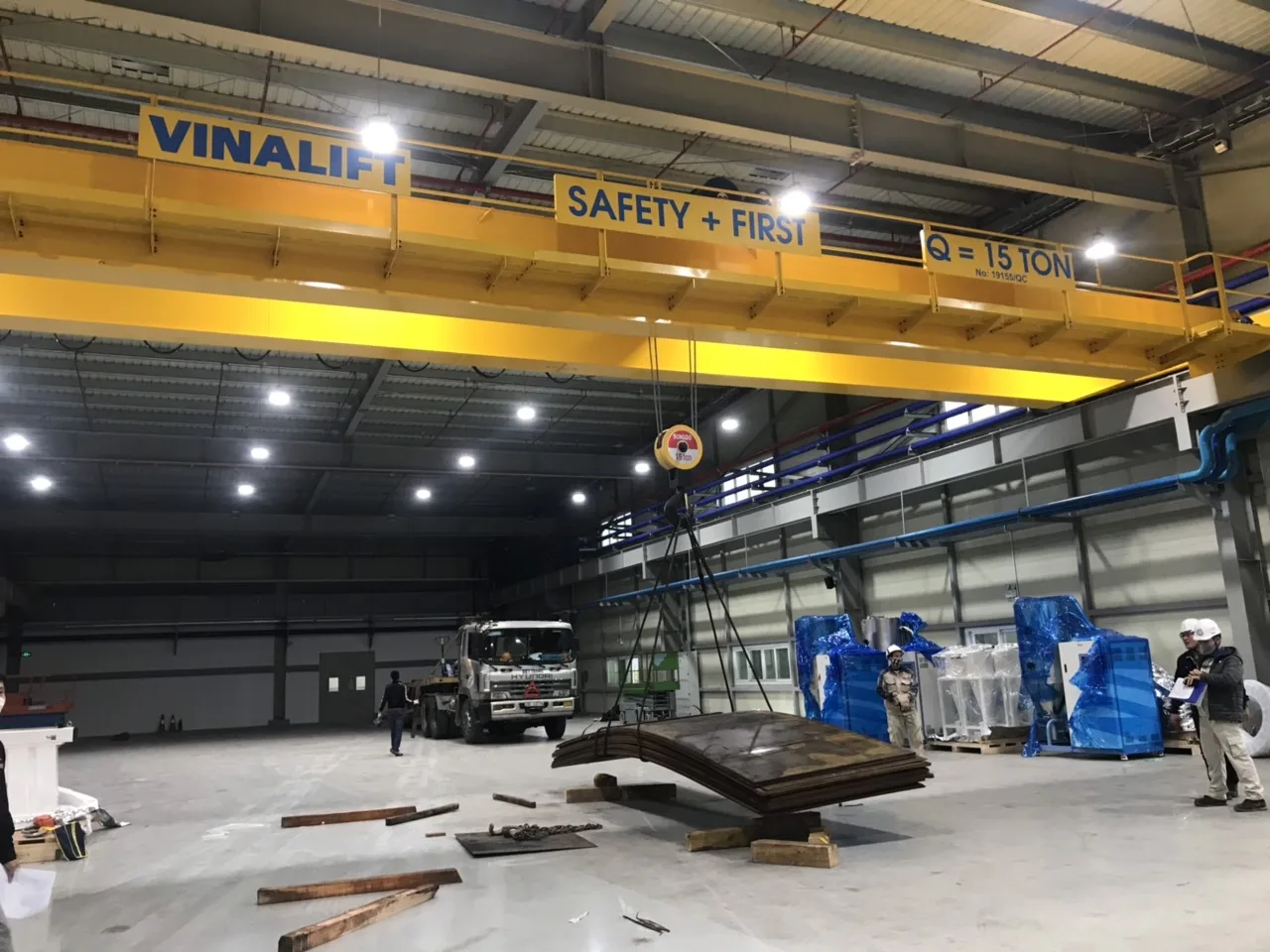
=>>> READ MORE: 15-TON GANTRY CRANE
=>>> READ MORE: WHAT IS OVERHEAD CRANE? 5 FACTORS TO CONSIDER WHEN CHOOSE OVERHEAD CRANE
Daily Inspection
Before each work shift, operators must perform visual checks to ensure the equipment operates under safe conditions. These simple visual inspections help operators promptly identify any issues with the equipment, thereby enhancing safety and reducing downtime.
Tasks for operators include:
- Visually inspecting the work area to ensure the general working conditions of the equipment (as per the manufacturer’s design) and that there are no obstructions to its normal operation.
- Checking for any oil leaks from the mechanical components of the equipment.
- Inspecting for any abnormalities such as misalignment, twisting of cables, lifting chains, or steel structures. Ensuring the equipment is clean and properly lubricated before use.
- Checking the load-bearing hook for cracks, and deformations, and ensuring it rotates freely.
- Inspecting cables and chains for cracks, deformations, or twists.
- Verifying the functionality of indicators and warning devices.
- Checking electrical equipment, circuits, and control buttons to ensure there are no damages or hazards.
- Ensuring the brakes, limit switches, and indicators are functioning properly, and making adjustments if necessary.
Quarterly Inspection
The purpose of quarterly inspections is to verify the normal operation of the crane and make repairs if needed. The interval between inspections depends on the equipment’s usage but should not exceed three months unless the equipment is not in use.
Tasks include:
- Performing all tasks from the daily inspection.
- Checking the condition of oils and lubricants in components, and replenishing or replacing them as needed.
- Inspecting the connections of mechanical components and repairing or replacing any damaged parts.
- Ensuring the proper functioning and alignment of drive components such as shaft couplings and gear engagements.
- Replacing worn parts like brake linings.
- Marking and replacing cables that are excessively worn or have broken strands, according to the allowed limits specified in TCVN 4244-2005.
- Adjusting the operation of the entire brake system and limit switches.
- Adding grease to bearings and other lubrication points as required by the equipment’s manual.
- Replacing and replenishing oil in the required components, ensuring the correct type and volume as per the equipment’s manual.
- Inspecting and repairing electrical components, indicators, and warning devices.
- Checking and tightening electrical connections to motors and control cables.
Annual Inspection
During the annual inspection, the following tasks are performed in addition to the quarterly inspection tasks:
- Replacing worn or damaged brake components and adjusting the brake system.
- Checking the runout of the drive shaft, making adjustments or repairs if there is misalignment.
- Replenishing or replacing oil in the crane’s mechanisms.
- Inspecting the quality of steel cables and hooks.
- Repairing safety devices.
- Inspecting the steel structure, repainting, and repairing any damages.
Inspections and Repairs after Five Years of Use
- Completing all tasks from the annual inspection.
- Replacing or refurbishing the drive shaft.
- Replacing or refurbishing crane wheels.
- Replacing wheel bearings.
- Inspecting and replacing electrical accessories.
- Replacing or refurbishing electrical components.
- Checking the entire steel structure of the crane, repairing any corroded or worn parts, and inspecting all structural connections (tightening, replacing bolts).
- Removing rust and repainting the entire crane.
- After the overhaul, conducting a load test and documenting the inspection results before putting the crane back into operation.
Important Crane Components to Inspect
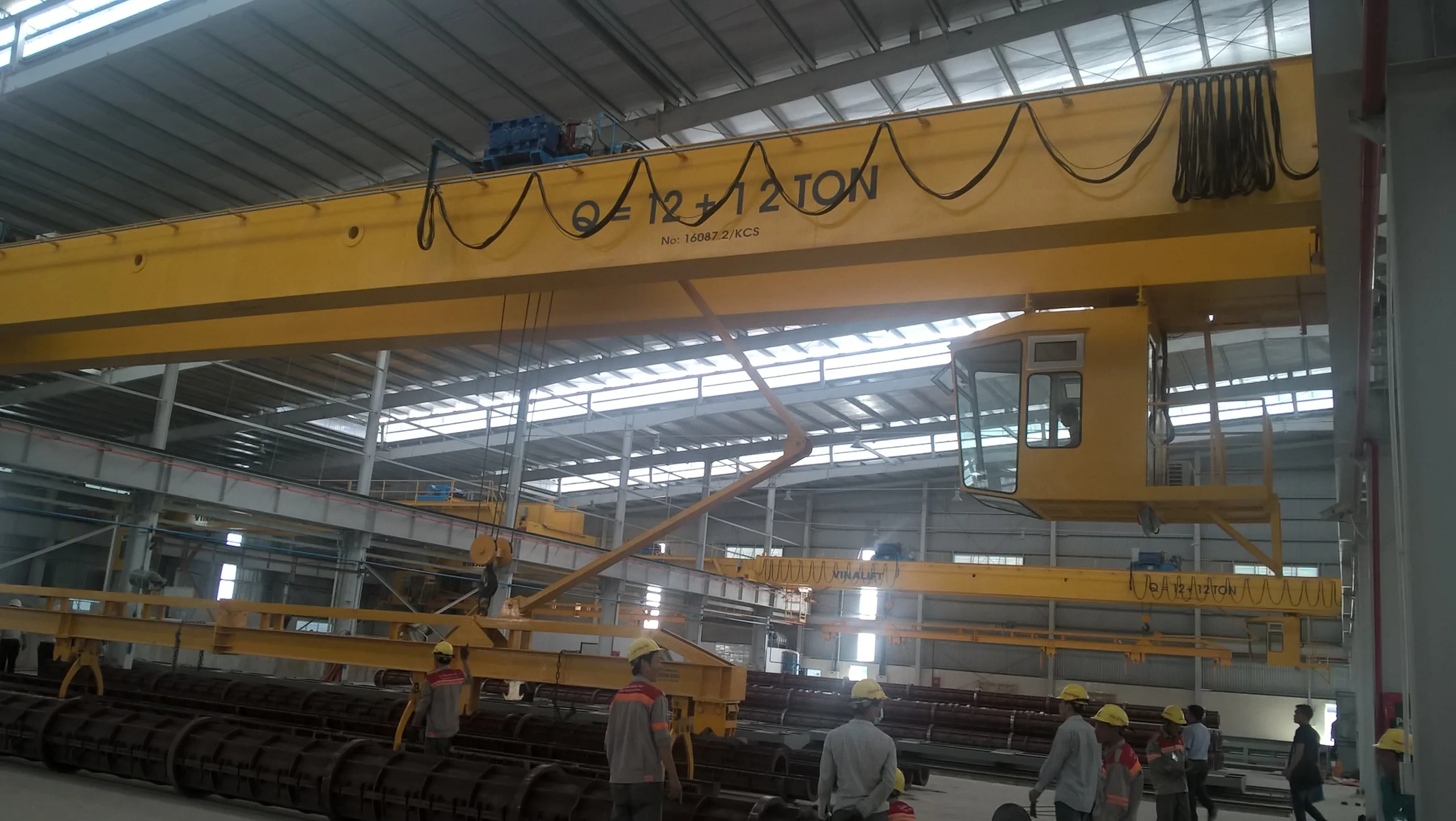
A list of critical components to be inspected and maintained
| Component | Inspection Location | Task | Remedial Action |
| Steel structure | Bolted connections | Rust, loosening, missing bolts | – Tighten or replace bolts – Replace deformed or broken parts – Replace lubricant |
| Welds | Cracks, breaks | ||
| Structural components | Rust, deformation, cracks, breaks | ||
| Pins and shafts | Wear and lubrication | ||
| Rail tracks | Deformation, cracks, wear | ||
| Walkways, railings | Deformation, cracking | ||
| Reducer gears and intermediate gears | Gears | Matching, wear | – Align the center of engagement between the motor, coupling, gearbox, and external transmission. – Replace worn parts – Tighten and replace the connecting bolts – Lubricant position |
| Key | Deformation, loosening | ||
| Bearing support | Wear, lubrication conditions, temperature | ||
| Oil seal | Worn | ||
| Bolted connections | Loosening, loss | ||
| Lubricating oil | Oil leakage, oil contamination, and oil quantity | ||
| Vibration level | Vibration, noise | ||
| Brake | Brake pads | Worn | – Align the center of the coupling between the motor, the coupling between the motor, the coupling, the gearbox, and the external transmission – Replace worn parts – Tighten – Lubrication |
| Brake wheel | Worn | ||
| Working of brake pads and brake wheels | Brake clearance | ||
| Brake shoes, levers, latches | Deformation, loosening | ||
| Hydraulic brake pad | Amount of oil in the bulb | ||
| Bolted connections | Loosening, loss | ||
| Oil seal | Worn | ||
| Lubricating oil | Oil leakage, oil contamination, and oil quantity | ||
| Connecting bolts | Loosening, loss | ||
| Key | Deformation, loosening | ||
| Wheel | Rolling surface, wheel edge | Worn and deformed | – Replace worn parts – Tighten – Lubrication |
| Shaft, bushing | Worn and deformed | ||
| Bearing support | Worn, lubrication conditions, temperature | ||
| Connecting bolts | Loosening, loss | ||
| Puly | Surface of Puly | Puly no cracks or excessive wear | Replace puly |
| Chain cable | Outer surface | Dirty, rusty, worn or deformed | – Replace worn parts – Tighten – Lubrication |
| Hanger | Hook body | Worn, twisted, cracked, broken | Replace when test values exceed allowable limits |
| Hook mouth | Deformation | ||
| Threaded part on hook and ecu | Cracked, worn |
Facility for checking crane details and assemblies
The basic basis for checking important details is described in detail below. Parts that do not meet the standards outlined in this section will have to be replaced or repaired immediately.
Allowable wear for mechanical parts
| Component | Task | Allowable wear | ||
| Gears | Gear level 1 | 5% of the original thickness | ||
| Other gears | 10% of the original thickness | |||
| Wheel | Thick surface | Rolling diameter | Diameter difference | |
| Active wheel | 3% | 0.20% | ||
| Passive wheel | 0.50% | |||
| Brake | Brake pads | 50% of the original thickness | ||
| Brake wheel | Surface wear difference exceeds 2mm, the brake wheel needs re-machining when the thickness is reduced to 60% of the original thickness, and the brake wheel needs to be replaced | |||
- Note: After the brake pads are replaced and repaired, the brakes and initial wear of the brake pads must be checked to ensure contact between the brake pads and the brake wheel. Poor exposure conditions can lead to accidents
Cases where crane hooks must be replaced
| Inspection Location | Type of disability | Elimination criteria |
| Hook body | Worn | Wear exceeds 10% of the original cross-sectional area in zone A and 5% in zone B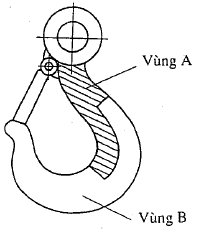 |
| Curly | Any twisting along the hook axis | |
| Cracked, broken | Any cracks | |
| Damaged | Any cuts, grooves, or aspects that affect safe use | |
| Hooked mouth | Deformation | Any deformation of the mouth of the hook |
| Threaded part on the hook | Worn | Wear exceeding 2.5% of threaded part diameter |
Lubrication
Lubrication is the most important task in keeping the crane running smoothly. Lubrication points should be checked according to their usage frequency. In all cases, attention must be paid to the lubrication conditions to reduce contamination of the oil and lubricants. If bearings are not lubricated, the crane’s lifespan will be reduced. Cranes have many lubrication points, and checking, lubricating, and replacing lubricants must be done according to the overhead crane maintenance schedule.
Notes on lubrication and maintenance of cranes
- Loading chain: Apply oil to the chain periodically once a month to reduce chain wear.
- Pulley: Apply grease to the pulley bearings every 4 months
- Moving assembly: Apply grease to the wheel axle every 6 months to keep the wheel running smoothly, reducing friction between the wheel axle and bearings.
Overhead crane maintenance – Mechanical parts
Ball bearing
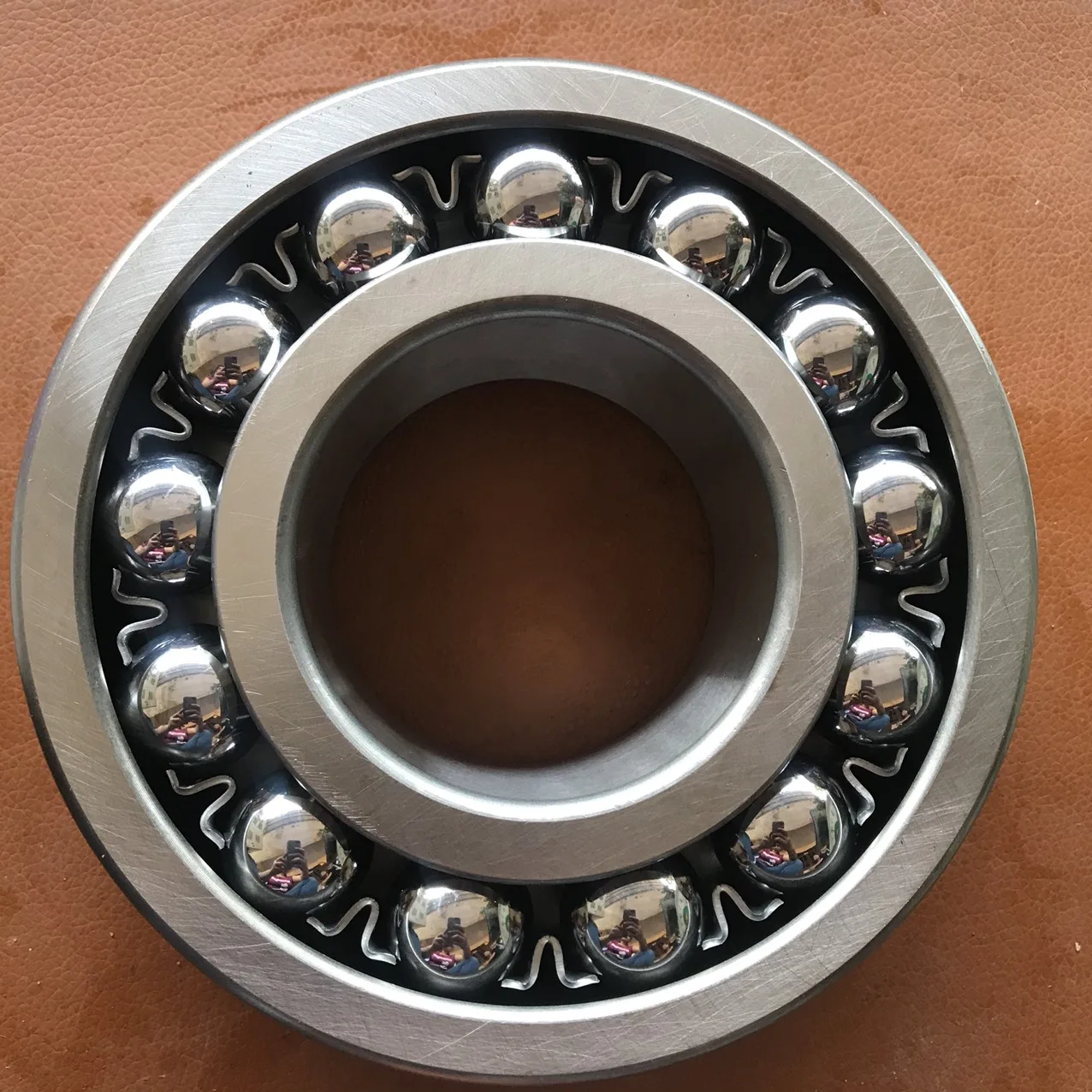
- Ball bearings are used in almost every position of the crane. This is a big difficulty in determining which bearing needs to be replaced because the life of the bearing depends largely on the location where it is installed.
- Therefore, when performing daily checks, attention should be paid to unusual noises and unusual temperature increases. If there is damage to a bearing, it must be replaced with a new one promptly.
Assembly Tolerances during Major Repairs
- If mounting tolerances are not guaranteed, the bearing cannot function properly. This also endangers the shafts and bearings. Unnecessary gaps or overlaps between the bearing and the shaft or center or bearing housing must be eliminated.
- Unnecessary clearance will cause the shaft to slip slightly with the bearing, and dirt will penetrate the bearing surface. The overlap increases the rotational resistance of the ball bearing, causing deformation and abnormal temperature increase. All of these situations reduce the life of the bearing, causing abnormal wear and endangering the roller surface.
Replace the bearing
- Bearings must be kept clean at all times. If the bearing is dirty, its life will be reduced. Need to use gasoline or mineral oils (free acid-base) to clean bearings. After cleaning the bearings, avoid allowing sweat to come into contact with the bearings. Bearings are kept in storage cabinets until they are used.
- When using force to install the inner ring of the bearing under normal temperature conditions, use millet wood to transmit force to the inner ring of the bearing. Do not apply force to the pillowcase or the outer ring of the socket. Do not apply force to the inner ring through the rollers, causing wear or abnormal noise when operating the crane. When disassembling and installing bearings, it should be done under the direction of a technician.
Oil seal
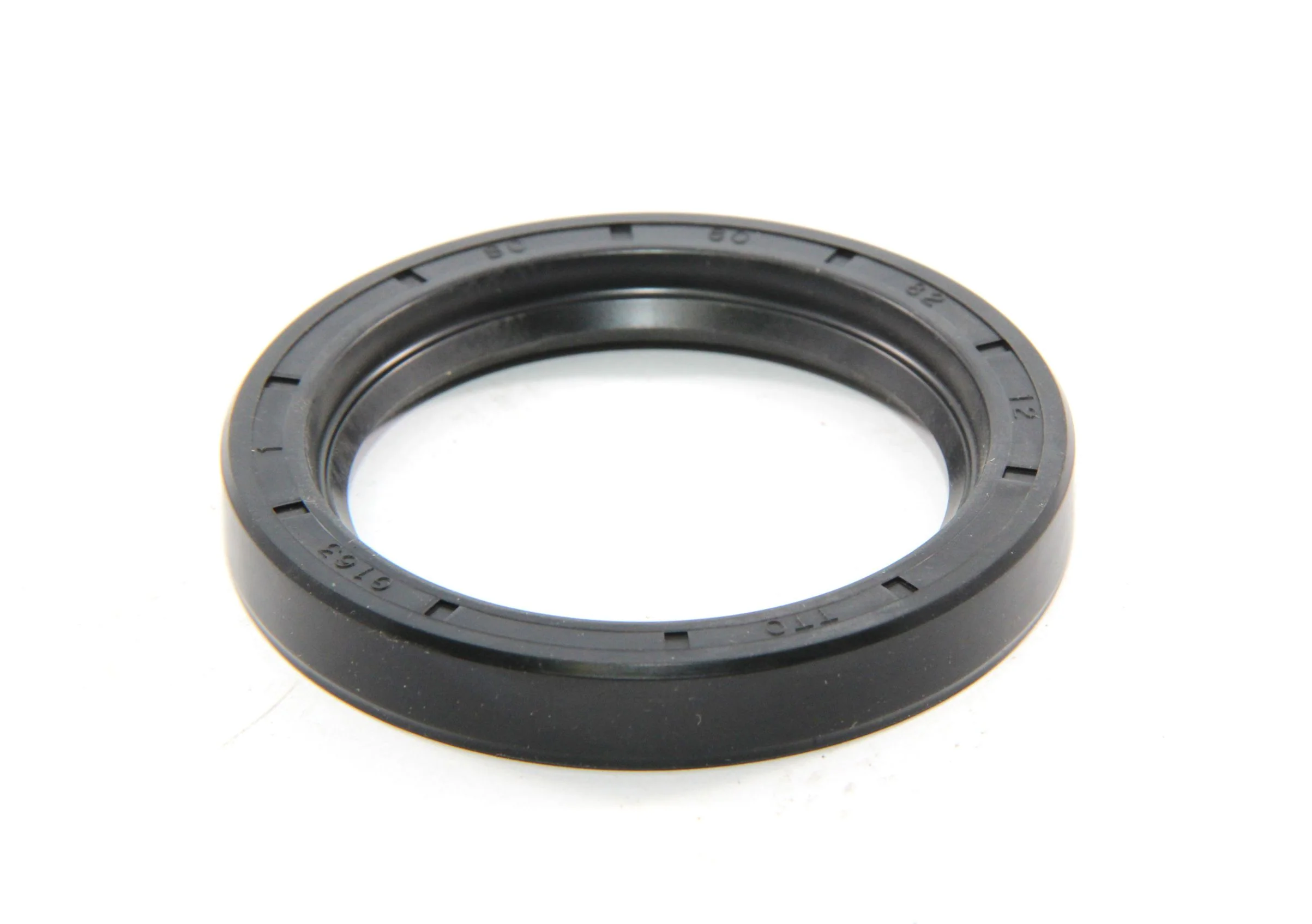
- If a shaft is installed through a bearing housing, an oil seal will be used. On this crane, the seal ring used has 2 effects: one is used at the tangle lubrication points, and the other is used at the oil lubrication points.
- In the first case, the seal is used as a dust oil seal, and in the latter case, the seal is used on the output shaft end and input shaft end of the gear reducer to prevent tip leakage. Check the locations where the oil seal is located carefully, especially the cleanliness of the seal. If there is an oil leak, the seal needs to be replaced with a new one.
Gear
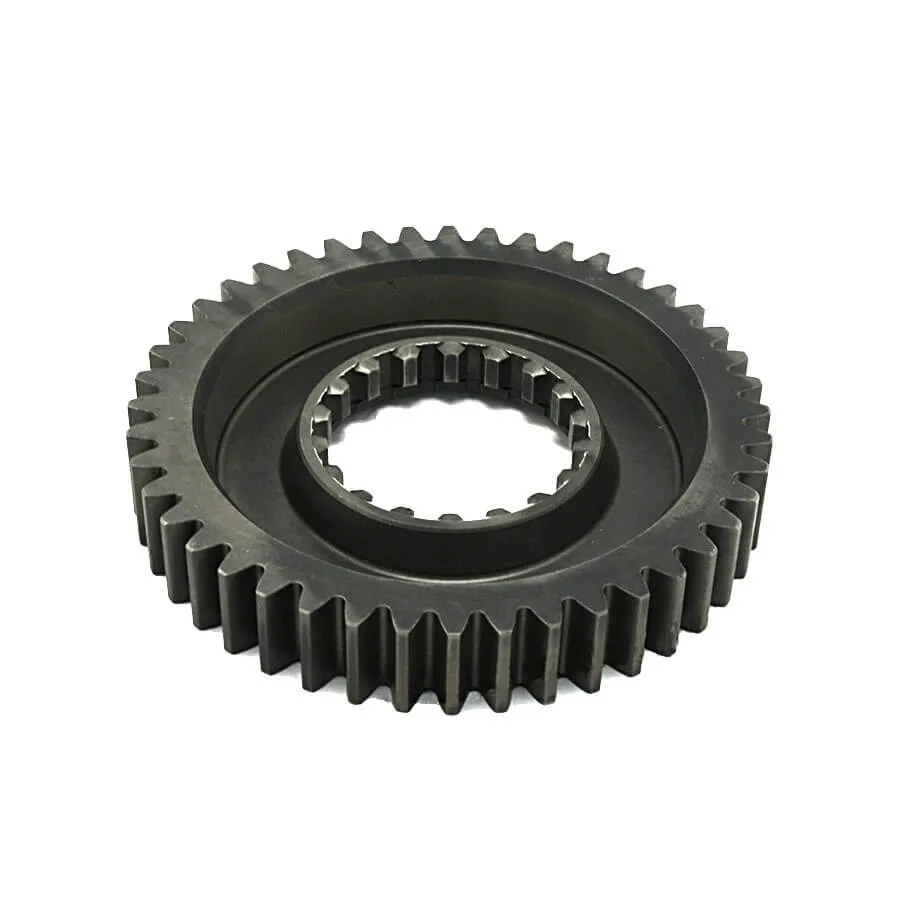
It is possible to determine the noise when the teeth mesh together. Therefore, it is necessary to pay attention to the change in noise right from the beginning, when the gearbox and external transmission begin to operate. A gear will gradually wear out even though the gear is regularly maintained. Check the working condition of the teeth by measuring the movement on certain teeth. The main types of wear are listed below:
- Tooth misalignment: When teeth mesh, damage to the teeth can be caused by deformation, tooth slippage, or misalignment of shaft supports and gear reducers due to impact or vibration.
Poor lubrication: Direct metal-to-metal contact when teeth engage due to lack of oil film formation may be due to poor lubrication or oil leakage. At that time, pitting and scratches on the tooth surface will appear.
If abrasive particles from the teeth or dirt mix with the lubricant, the tooth surface will be damaged, and wear and scratches will appear.
Overload: If the load applied to the tooth exceeds the rated value, the oil film may be removed (leading to direct metal-to-metal contact), possibly causing adhesion or tooth fracture.
In any of the above cases, the user can detect abnormal noise and can confirm it from direct observation. If any problems are detected, it is necessary to consult with experts to determine the necessary measures.
The following terms will be used to describe the types of tooth surface damage:
- Pitting: Surface fatigue or pitting is a form of surface failure due to exceeding the fatigue limit value of the manufacturing material. The lower teeth apply repeated loads on the surface and cause stress under the surface. If the load is large enough and the stress cycle is frequent, it will cause fatigue of the metal element from pits on the metal surface when machining. . They occur at locations where stress is exceeded and tend to be widely distributed according to load due to displacement of contact locations.
- Abrasion: Abrasion is a type of tooth surface failure caused by a thin lubricating film or low viscosity lubricant; a lubricant with suitable viscosity under normal operating temperatures but carries wear particles, sand due to not being cleaned after casting…; impurities contained in the oil or burrs that are loose from the tooth surface or other machined surfaces.
- Cracking: Tooth cracking, similar to pitting, often appears when the pits are large in diameter and develop on a large scale. Sometimes, cracking occurs from pits on harder gear surfaces, or near the transition line between harder and softer layers of material. Cracks can also form by impacting pits against each other and leaving larger pits.
Wheel
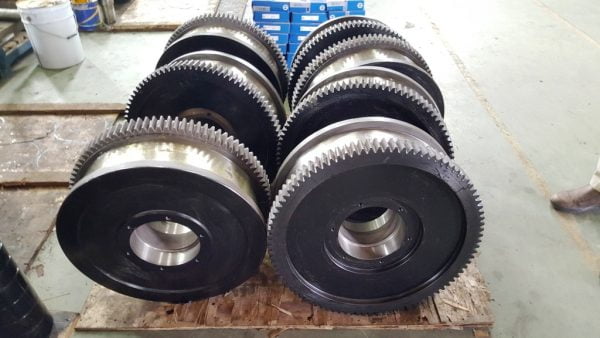
Couplings
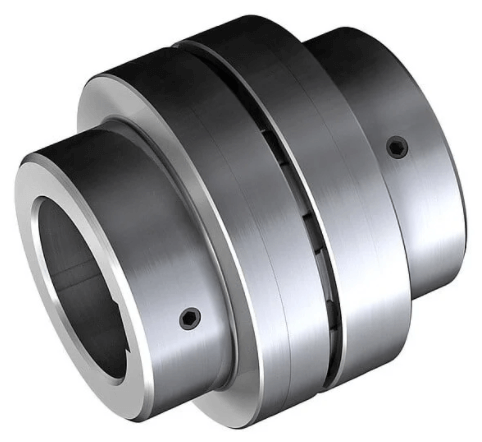
Please follow us on our WEBSITE or social media platforms such as FACEBOOK, LINKEDIN, and YOUTUBE for new articles with useful information.

